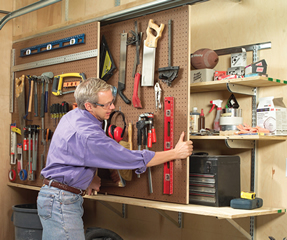Survey of Rural Challenges 2015 – 2025 results
Download the PDF report Executive Summary The Survey of Rural Challenges asks rural people to share their ground-level insight into the challenges they face and the assets they can use. This report analyzes over 2200 responses from communities across the US and Canada from 2015 to 2024. The responses show what’s changing and what isn’t […]
Download the PDF report
Executive Summary
The Survey of Rural Challenges asks rural people to share their ground-level insight into the challenges they face and the assets they can use. This report analyzes over 2200 responses from communities across the US and Canada from 2015 to 2024. The responses show what’s changing and what isn’t in small towns and rural places from the point of view of their own people.
- Persistent challenges: Youth out-migration, downtown decline, workforce shortages and struggles with local business marketing continue to challenge rural communities.
- Fast-moving concerns: The housing crisis, lack of adequate childcare and lack of support for small businesses have increased as significant rural challenges in recent years.
- Slow-building challenges: Over time, the lack of volunteers, the pressure from online competition on local businesses, and the lack of usable commercial buildings have risen to greater importance.
- Appreciating assets: The strength of rural communities to address their challenges comes from significant assets, including natural resources, strong social bonds, a spirit of entrepreneurship, a small but dedicated workforce and action on broadband access.
- Demographic shifts: Besides basic population numbers in their communities, rural people noted differences in ages, professions, education and more.
- The external view: Much of this nuance is lost in the external understanding of rural challenges and assets in the media, government, organizations and agencies.
The primary conclusion is that although good ideas are stifled by conflict, negativity and old way thinking, communities that are open to new ideas can thrive. Agencies, organizations, media and policy makers can use these insights to improve how they serve rural people.
Survey of Rural Challenges Ten-year Trends
The Survey of Rural Challenges collected input online from rural and small town people. The questions offered multiple-choice options for challenges and open-ended responses about assets, community makeup and anything else they wanted to share about their communities and businesses. The survey was opened for limited time periods, with results shared in 2015, 2017, 2019, 2021, 2023 and 2024. This data over time provides a view of the changes in rural communities.
Authors Becky McCray and Deb Brown analyzed the complete set of over 2200 responses, identifying challenges that have persisted, new fast-moving concerns and some slow building challenges that have risen over time. They also identified rural assets, the internal view of demographic shifts in rural communities, and insight into how the external view differs.
The primary insight: Good ideas are stifled by conflict, negativity and old way thinking, and towns that are open to new ideas can thrive.
In all rounds of the survey, open-ended responses were dominated by all kinds of negativity, the stifling influence of the old guard in leadership, and people who tried to slow down any changes. Responses mentioned leaders not moving forward, not acting on suggestions or new ideas, people with a “poor us” attitude, and communities breaking into factions for and against change. Personal agendas, local organizations that don’t work together and infighting hold communities back.
In 2019, one response said:
The old guard had a lot of experience – good & bad – and with new ideas tended to say “we tried something like that once…” and instead of taking what didn’t work & learning from it, crossed it off the list of things to try at all
Facing apathy, resistance to new ideas and focusing too much on the past all inhibit how willing people say they are to keep taking action. People’s initiative becomes “a strength hobbled by a problem,” one response from 2023 said.
Iowa State University’s Small Town Project showed that openness to new ideas was the factor most correlated to positive outcomes and thriving communities.
If there is one single thing that can most positively change the trajectory of rural communities, it is to be more open to new ideas.
Applying the Idea Friendly Method from SaveYour.Town is one way to accomplish this.
Persistent challenges: Youth out-migration, downtown decline, workforce shortages and struggles with local business marketing continue to challenge rural communities.
Each of the following challenges has remained at or near the top of the multiple choice challenges across all rounds of the survey. In 2021, challenges stemming from the pandemic and economic crisis ranked lower than these persistent challenges. Any rural support that does not consider these top challenges is ignoring critical ongoing needs.
The loss of young people has consistently been one of the top five challenges. Residents see the annual exodus of high school graduates as representing the loss of their town’s future. Rural residents are not only concerned with retaining young people but also attracting new younger adult residents.
The decline of downtown areas is another highly visible symbol of changes in rural communities. Shifts in economic realities have changed what businesses are present and the amount of activity in downtowns over most people’s lifetimes. Though more open-ended comments have shown appreciation for their downtown areas’ businesses, buildings and charm, “dead” downtowns continue to rank as a top multiple choice challenge. The lack of investment in downtown infrastructure is also a factor in the need for usable commercial buildings, one of the slow-building challenges.
Small town businesses continue to struggle with effective marketing. Traditional media has declined in rural areas, removing a once-powerful tool for local business marketing. Local business people say the fast moving changes in online marketing have been difficult for them to keep up with and consistently master.
While workforce challenges are not unique to small towns, rural businesses face the added complication of a smaller labor market to begin with. Employees are often cited as a great asset of rural businesses, even as organizations struggle to hire new people. One person said in 2023, “The biggest challenge is keeping your greatest assets going. I work in health care, and we currently have great staff. However, there are many open positions that cannot be filled.”
Fast-moving concerns: The housing crisis, lack of adequate childcare, and lack of support for small businesses have rapidly increased as significant rural challenges in recent years.
These fast-moving challenges may surprise some observers and some rural residents. The data challenges existing views of small towns formed over decades and calls for quick responses from rural-serving organizations, policy makers and local leaders.
Rural housing has moved from a key asset to a critical shortage. In 2015 and 2017, housing was barely mentioned in responses. Cheap housing was seen as a small town asset, drawing new residents out of more expensive urban areas. Starting in 2019, housing ranked as a top rural challenge, and it has remained in the top three since then. The increasing cost of housing, declining condition of existing houses, loss of houses through attrition and a lack of new construction were all mentioned.
The lack of childcare has quickly risen to crisis proportions, made more evident during the pandemic and post-pandemic. Without adequate childcare, responses said people are kept out of the rural workforce and potential new residents are reluctant or unable to move into small communities. Although several people mentioned new housing initiatives in their communities, progress on child care remained elusive.
The lack of support for small businesses shot to the top of the rankings on the most recent survey. Feelings of not being supported have long been mentioned in responses, but this marked a sudden spike in concern. Business owners talked about unfair incentives offered to recruit outside businesses, as well as the lack of direct support from officials and organizations.
One person said in 2024, “Chamber of Commerce only cares about the big money businesses/industry and is stuck in the 70’s 80’s way of doing business.”
Slow-building challenges: Over time, the lack of volunteers, the pressure from online competition on local businesses, and the lack of usable commercial buildings have risen to greater importance.
Even experienced rural observers may have missed these challenges as they have slowly risen to the top. Current rural programs have not proven effective at stopping this increase.
The lack of usable commercial buildings frequently surprises outside observers. In 2015 the lack of usable buildings ranked in the middle of the business challenges, ranking about the same as the challenge of finding a small business loan. Since then, the lack of usable buildings has climbed into the top challenges, while the difficulty finding a loan has continued to drop in the rankings.
The lack of buildings is closely tied to the decline of rural downtowns and the lack of investment in small town infrastructure. It is complicated by individuals who buy buildings, sometimes many buildings in a single community, but do not maintain them or make them available for commercial use. Many are used as cheap storage, either for the remains of a former business or personal items.
“We have a lot of dilapidated buildings in our downtown, many of which are owned by 2 families who are pack rats and have them filled with junk and garbage,” one 2015 response said. “They never plan to open these as business and it makes our town look terrible.”
Volunteers are seen as strong assets in rural communities, and the lack of volunteers is a growing challenge. Since 2021, lack of volunteers has ranked in the top five challenges, after ranking in the middle on earlier surveys. Responses frequently mentioned the same few volunteers burning out, making it harder to maintain events and organizations.
Existing volunteers are often described as seniors, retired and “tried and true” people. Younger people are often mentioned as unwilling or uninterested in volunteering. Younger people who try to volunteer say they are ignored, run into inflexible ways of doing things and are assigned “life sentence” volunteer terms.
Competition from online sales increasingly squeezes local businesses in small towns. Early responses in 2015 and 2017 mentioned big box stores as the key competition. That has shifted to increasing mentions of online competition. This reflects the US Census Bureau reports of e-commerce sales of 7% of total retail sales in 2015, increasing to 16% in 2024.
“Shopping habits of people have changed, so it’s difficult to get people to come downtown when they can easily shop online,” one response from 2024 said. “I don’t see that reversing any time soon.”
Appreciating assets: The strength of rural communities to address their challenges comes from significant assets including natural resources, strong social bonds, a spirit of entrepreneurship, a small but dedicated workforce and action on broadband access.
Rather than focus only–or even primarily–on challenges, rural communities benefit from focusing on their wide variety of assets. Services and policies can also be more tailored to rural assets.
When asked to name their assets, rural people most often point to their natural resources. Easy access to recreation in nature remains a strong draw for rural residents. Survey responses often mention scenic beauty and an appreciation for the unique natural qualities of their area. They also mentioned natural resources as an economic asset, including farming, minerals and mining.
While much has been written about the strong social bonds of rural areas and small towns, it remains a complex topic. Small towns often have stronger ties between groups who are similar and weaker ties across groups who are different. People mentioned trouble breaking through cliques or small groups, especially those who wield decision-making power.
One way that the social bonds play a positive role is through people’s sense of connection to the community itself. The sense of connection leads them to focus on solving their own problems and addressing their own challenges.
One person in 2024 said, “Best assets are nature: the mountains, the trails, outdoor activities. Also welcoming atmosphere, community activities, good elementary school.”
Rural entrepreneurs said they value their relationships with customers and their communities. They often cite their workforce as one of their greatest assets, and they express a challenge in finding enough workers to meet their needs.
Broadband is shifting from a challenge to an asset. In the early surveys in 2015, through 2019, most mentions of broadband focused on the lack of access. From 2023 and 2024, broadband and fiber access were more often mentioned as assets or that action was being taken to improve it. Only a few mentions of a lack of broadband were made since 2021. There is also a need for supporting broadband adoption and development.
One 2019 response said, “we have fiber optics broadband but no industry around it – we need shared space and knowledge about marketing our rural community to remote workers and small tech companies.”
Many other assets were mentioned, showing the variety of rural communities today across the US and Canada.
Demographic shifts: Besides basic population numbers in their communities, rural people noted differences in ages, professions, education and more.
Demographic trends will continue to alter the makeup of rural communities. Outside observers may miss rural people’s nuanced views of differences within individual communities.
Rural people have a broader view of differences than might be expected, mentioning a wide variety of personal characteristics. The most common differences mentioned were related to race/ethnicity, youth/aging populations, education/skills, business/professions, and cultures/ideas. Gender spectrum and LGBTQIA were also mentioned, as well as income/class, disability, family structure, religion, political views, and military service.
More people described their communities as diverse than not on this survey. Many more people mentioned increasing diversity than mentioned conflict between demographic groups. The most common struggle mentioned was being welcoming to diverse populations.
The external view: Much of this nuance is lost in the external understanding of rural challenges and assets in the media, government, organizations and agencies.
These disconnects can lead to mis-matched services being offered, missing the real challenges, or over generalizing people, businesses and communities. Overwhelmingly negative stories influence rural self perception.
Crime and drug abuse continue to dominate narratives in external portrayals of rural areas. Rural people consistently rank these at or near the bottom on this survey.
Reporters are commonly dispatched to small communities struck by natural disasters or major economic losses because these are considered newsworthy events. The resulting coverage overrepresents these crises. On the survey results, crises or shocks to the community are seldom mentioned. In the 2021 pandemic-period survey, challenges stemming from the pandemic and economic crisis ranked as less common challenges than the persistent rural challenges.
Rather than passively waiting for outside businesses or organizations to come to their rescue, rural people report taking action. Even when asked for their challenges, they often start talking about trying solutions.
The stereotype of rural areas lacking culture ignores what rural people on this survey see as a major asset: their events and activities, their arts and artisans, their foods and traditions. Many times, rural communities are depicted as all white, which does not match many real-world communities or rural people’s own views.
Despite the stereotype of small town businesses as outdated or slow, the survey results show they are innovative, open to new ideas and focused on their customers’ experiences.
Although rural economic development often centers around jobs, it was one of the least-mentioned challenges in this survey. Good jobs are mentioned at least as often as a lack of jobs. While recruiting outside businesses is a pillar of traditional development, very few responses mention it. Instead, people talked about growing their own small businesses.
Rural small business owners show little interest in business plan assistance or pitch competitions, yet they remain popular types of assistance offered to rural businesses. On this survey, finding a usable commercial building was a more common challenge than finding a business loan. More small business lending funds are announced every year, yet little is announced to increase the supply of usable commercial buildings in small towns.
Action steps
Based on these insights into rural communities and small towns, practical steps to take can also be outlined. These action steps come directly from the challenges and assets identified by rural communities themselves.
Tailor support to specific community concerns and assets. Use this report and the biennial Survey of Rural Challenges results as they become available. Listen to the people in the community before making key decisions.
For business support, pay more attention to marketing and workforce. Provide more small opportunities for testing business ideas with little investment. Put at least as much or more emphasis on increasing usable buildings than increasing business lending.
Funnel financial resources to improve housing, childcare, downtowns and commercial buildings. Consider classifying these to qualify for economic development funding or moving funding from lower-valued services such as business plan assistance, pitch competitions or small business lending funds.
Broaden rural media coverage beyond poverty and disasters. Partner with and amplify stories from small town media outlets. Use the challenges and assets in this survey as a jumping off point to collect fresh local news.
For rural residents and small town leaders, be more open to new ideas and adopt the Idea Friendly Method to spur local innovations.
Participants’ own words
These quotes come directly from open-ended responses to the survey. Emphasis has been added, and some have been edited for length and clarity. Minor grammatical errors and idiosyncrasies were left in place.
Apathy and Old Way Thinking
- “Apathy is hard to overcome! There has to be a way and I’d love to hear how changes can be made to encourage pride in a small city with no extra funds.” (2024)
- “I’d love to hear about how other small towns have helped their community leaders get over the fear of failure. It has certainly hindered growth and development in our community. How do we best encourage people to take more risks? Be more creative with spaces?” (2015)
Small Business Needs
- “Small businesses need financial resources and business advisors. Most things are only available to those who run a non-profit.” (2024)
- “What isn’t working are the traditional approaches to economic development, rather than a strategy that focuses on ‘growing our own’ and entrepreneurship and small business development.” (2021)
- “[Online marketing] changes so fast & there’s so much technical jargon for SEO/ websites/mobile that I end up feeling stupid and end up ignoring it all. (2015)
Housing
- “I think we would have more young people live here if there were housing available.” (2021)
- “City officials keep shooting down low & medium income housing & new apartment buildings.“ (2015)
Welcoming
- “I wish members of the community would be more inclusive of residents who wish to participate in improvements, committees, and working toward more positive change in our community. Sometimes it feels like high school.” (2024)
- “There’s been a historical lack of diversity and little respect for people who don’t fit the norm. But I have hope that with increasing numbers of younger folks and more general awareness of the importance of diversity and equity that we’ll turn the corner.” (2021)
Using Assets
- “Covid helped the county take a better look in the mirror and realize status quo isn’t working anymore. …The quarterly meetings with our schools and businesses has been communicatively amazing in taking our county up several notches in employee training … entrepreneurship development, career center and community college involvement and basically training our students to think local first in employment and purchasing. Wins all around. The progress has led to some local and county elected official changes to younger forward thinking members. Still work to be done but the tide has turned to rising here raising us all.” (2024)
- “…We are in the process of revamping our Chamber of Commerce and moving to a more Regional model. We are also starting to look at things like development through arts & culture” (2019)
- “….we’re an abundant community… food, skills, culture wise etc …How do we access that abundance” (2015)
Success with Challenges
- “In a community survey from 2020-21, Affordable housing, access and affordability to child care, and expanding Broadband were three of the top issues residents identified. The County and region has been making meaningful progress toward housing and Broadband, but childcare remains elusive..” (2024)
- “I do think we are lucky to have people who care and are willing to work together to achieve great things. We just maybe haven’t been able to find ways to promote what we have here. It might be that we are unsure of exactly what our assets are.” (2019)
Optimistic Future
- “Just that we are trying to rebuild after Covid and are taking small steps to working towards our new goals..” (2024)
- “A group of progressive minded “young” (30 to 55) leaders have joined together to celebrate what is right about our community and to make some fun things happen.” (2019)
- “We’re at a crossroads here with the challenges to the Old Way by many new people moving in to be a part of an industry the Old Guard doesn’t understand. However, there are some bright spots on Main Street, and we are optimistic about the future. :).” (2024)
Methodology
This report was written by Becky McCray and Deb Brown, the co-founders of SaveYour.Town. It is based on analysis of all six rounds of the Survey of Rural Challenges conducted between 2015 and 2024. The survey data provides insights into the evolving challenges, assets, and perceptions of people in rural communities and small town businesses. Reports of survey results including the complete text of each round of survey questions are available at
The survey is a project of SaveYour.Town and SmallBizSurvival.com, and it is typically open for responses every other year. Participants came primarily from the US and Canada, with a few from other countries including Australia, the UK, and New Zealand. Between 2015 and 2024, over 2200 responses to the survey have been received.
Responses were collected online from subscribers and visitors to SaveYour.Town and SmallBizSurvival.com, from media coverage and cooperating groups that publicized the survey. Respondents identified themselves as rural by completing the survey, and a portion identified themselves as business owners by responding to the business question.
Based on survey responses and SaveYour.Town’s customer data, most respondents serve as community leaders and officials, work in community and economic development, own a business, work in a community-oriented business, or volunteer informally in their community.
About the authors and organizations
About SaveYour.Town
SaveYour.Town believes small towns can be saved by their own people using their existing assets. Deb Brown and Becky McCray joined forces in May 2015 to help small towns and rural communities thrive. They specialize in low or no cost solutions, ones that will work in even the tiniest of towns. Becky and Deb deliver presentations internationally, lead site visits and community brainstorming sessions, and create online videos and short courses of practical steps that can be put into action right away. They are frequently featured as rural experts on podcasts and in media interviews.
About Small Biz Survival
SmallBizSurvival.com publishes practical articles for rural small businesses. It was founded in January 2006 by Becky McCray from Oklahoma and has published over 3,000 posts by a dozen expert authors. Over the years, it has achieved top ranking among small business blogs. For her work as publisher, McCray has been named one of the Power Players in Technology Business Media and a Small Business Influencer Journalist four times.
About Becky McCray
Becky McCray is a lifelong rural entrepreneur, cattle rancher and co-founder of SaveYour.Town. She created the Survey of Rural Challenges in 2015. As an expert on rural communities, she often collaborates on rural publications, initiatives, advisory boards, listening sessions and advocacy events including Oklahoma State University’s Rural Renewal Initiative, American Independent Business Alliance campaigns, and the Harvard Kennedy School’s Reimagining the Economy Project.
In 2013, Becky and Chicago author Barry Moltz wrote the award-winning book Small Town Rules, published by Que BizTech. She has presented at more than 300 rural and small town events in the US, Canada, UK and Australia, including Main Street America, International Economic Development Council (IEDC) and TEDx. She makes her home in Hopeton, Oklahoma, a community of 30 people.
About Deb Brown
Deb Brown is a dynamic small-town advocate and community development expert with a wealth of experience helping rural communities. As the co-founder of SaveYour.Town, she has been working alongside Becky McCray for a decade, providing practical advice and innovative solutions to shape brighter futures for small towns.
Deb excels at building connections, storytelling, and active listening. Drawing on skills she developed through chamber of commerce work, a variety of business and management experience, and her love of small towns, she guides people in taking small steps toward their ideas and helps them find the resources and connections needed to bring those ideas to fruition. Deb has helped communities address challenges like empty buildings, loss of residents, downtown rejuvenation, creating economic growth, and marketing and promotion.
Deb developed stories from the rural communities she has worked with and wrote a book, “From Possibilities to Reality: Save Your Small Town with these Uniquely Do-able Ideas, Projects, and Success Stories.” It is a comprehensive workbook filled with practical strategies and real-world examples for small-town revitalization.
Download the PDF report
Survey Results and News Room:
For more info contact
- Becky McCray becky@smallbizsurvival.com
- Deb Brown deb@saveyour.town
Keywords and classification:
- Survey of Rural Challenges
- Rural surveys and polls
- What rural people need and want
- What a small town needs
- Rural people needs and wants
- Rural challenges
- Small town issues
- Urban-rural divide
- Rural policy
- Diversity in rural communities
- Diverse small towns
- Rural assistance programs
Recommended Story For You :

Crypto secrets livestream bootcamp

Remix Your Business.Transform Your Life.

Launching Your Woodworking Business From Home... With Minimal Capital

100% rule based Forex system

Trusted Forex Signals Your Journey Starts Here

Adsense Pirate- from $8 a Day to $800+ A Month

Autotrading Made Easy

Why create project documents from scratch when you have

Want to become a professional trader and earn 10x more profits?


